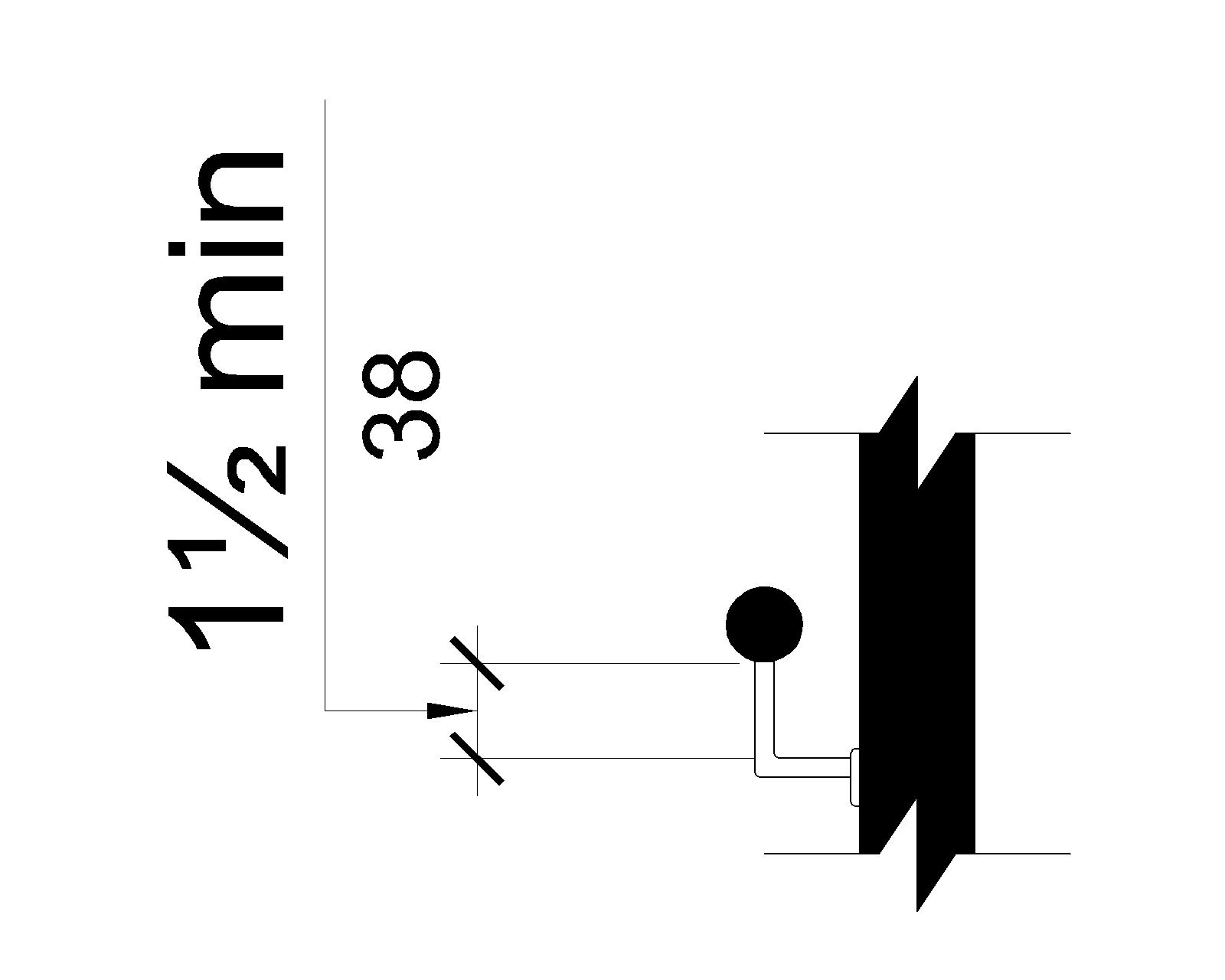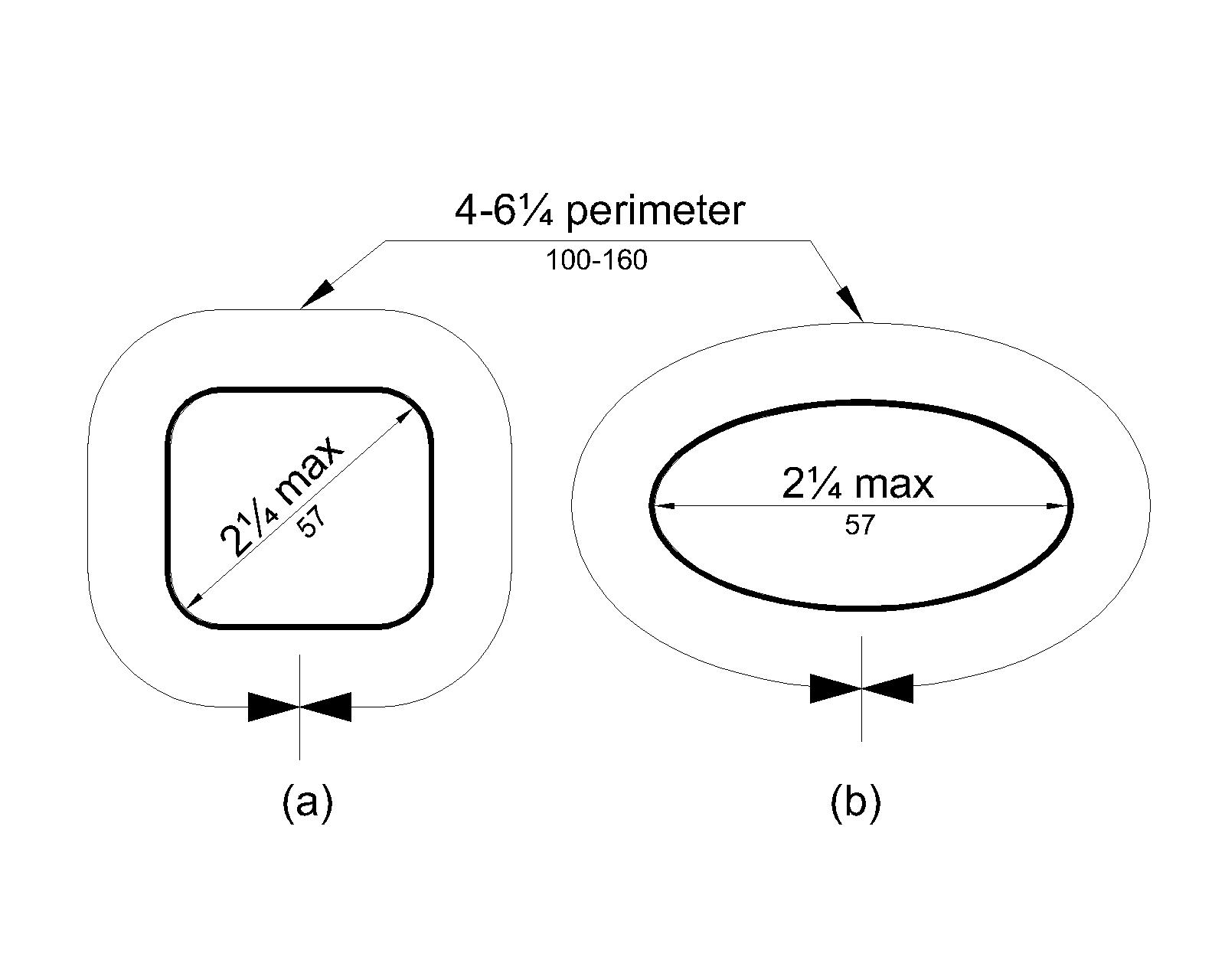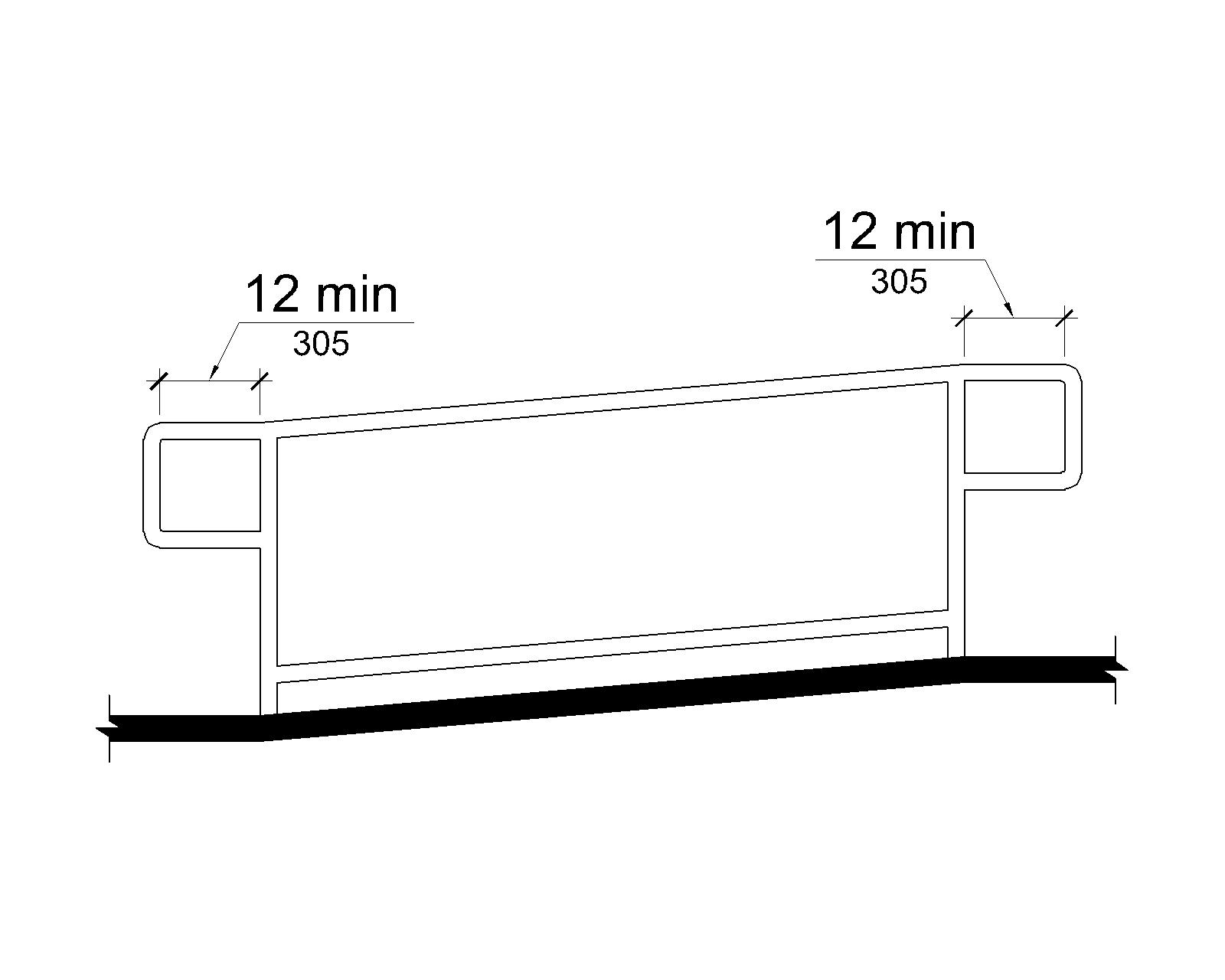V501 General
V501.1 Scope
The provisions of Chapter 5 shall apply where required by Chapter 2 or where referenced by a requirement in this document.
V502 Pool Stairs
V502.1 General
Pool stairs shall comply with V502.
V502.2 Treads and Risers
All steps on pool stairs shall have uniform riser heights and uniform tread depths. Risers shall be 4 inches (100 mm) high minimum and 7 inches (180 mm) high maximum. Treads shall be 11 inches (280 mm) deep minimum. Tread depth shall be measured from riser to riser.
EXCEPTION
Risers shall not be required to comply with V502.2 if riser heights are uniform.
V502.3 Closed Risers
Risers shall be closed.
V502.4 Tread Surface
Stair treads shall comply with V302. Changes in level are not permitted.
EXCEPTION
Treads shall be permitted to have a slope not steeper than 1:48.
V502.5 Nosings
The radius of curvature at the leading edge of the tread shall be ½ inch (13 mm) maximum. Nosings that project beyond risers shall have the underside of the leading edge curved or beveled. Risers shall be permitted to slope under the tread at an angle of 30 degrees maximum from vertical. The permitted projection of the nosing shall extend 1½ inches (38 mm) maximum over the tread below.

V502.6 Handrails
Pool stairs shall have handrails complying with V503.
V503 Handrails
V503.1 General
Handrails provided along walking surfaces complying with V403, at elevators complying with V407 or V408, and at platform lifts complying with V409, shall comply with V503. Handrails required at ramps complying with V405, gangways complying with V410, and pool stairs complying with V502, shall comply with V503.
V503.2 Where Required
Handrails shall be provided on both sides of pool stairs, gangways, and ramps.
EXCEPTION
In assembly areas, handrails shall not be required on both sides of aisle ramps where a handrail is provided at either side or within the aisle width.
V503.3 Continuity
Handrails shall be continuous within the full length o. each set of pool stairs, gangway run, or ramp run. Inside handrails on switchback or dogleg ramps shall be continuous between flights or runs.
EXCEPTION
In assembly areas, handrails on ramps shall not be required to be continuous in aisles serving seating.
V503.4 Height
Top of gripping surfaces of handrails shall be 34 inches (865 mm) minimum and 38 inches (965 mm) maximum vertically above walking surfaces, stair nosings, gangway surfaces, and ramp surfaces. Handrails shall be at a consistent height above walking surfaces, stair nosings, gangway surfaces, and ramp surfaces.
EXCEPTION
Where the administrative authority requires handrails along walking surfaces with slopes not steeper than 1:20 to be located more than 38 inches (965 mm) above deck surfaces, the handrails shall not be required to comply with V503.4.
Advisory V503.4 Height. The requirements for stair, gangway, and ramp handrails in this document are for adults. When children are the principal users in a facility (e.g., children’s center), a second set of handrails at an appropriate height can assist them and aid in preventing accidents. A maximum height of 28 inches (710 mm) measured to the top of the gripping surface from the gangway surface, ramp surface or stair nosing is recommended for handrails designed for children. Sufficient vertical clearance between upper and lower handrails, 9 inches (230 mm) minimum, should be provided to help prevent entrapment.

V503.5 Clearance
Clearance between handrail gripping surfaces and adjacent surfaces shall be 1½ inches (38 mm) minimum.

V503.6 Gripping Surface
Handrail gripping surfaces shall be continuous along their length and shall not be obstructed along their tops or sides. The bottoms of handrail gripping surfaces shall not be obstructed for more than 20 percent of their length. Where provided, horizontal projections shall occur 1½ inches (38 mm) minimum below the bottom of the handrail gripping surface.
EXCEPTIONS
- Where handrails are provided along walking surfaces with slopes not steeper than 1:20, the bottoms of handrail gripping surfaces shall be permitted to be obstructed along their entire length where they are integral to crash rails or bumper guards.
- The distance between horizontal projections and the bottom of the gripping surface shall be permitted to be reduced by 1/8 inch (3.2 mm) for each ½ inch (13 mm) of additional handrail perimeter dimension that exceeds 4 inches (100 mm).
Advisory V503.6 Gripping Surface. People with disabilities, older people, and others benefit from continuous gripping surfaces that permit users to reach the fingers outward or downward to grasp the handrail, particularly as the user senses a loss of equilibrium or begins to fall.

V503.7 Cross Section
Handrail gripping surfaces shall have a cross section complying with V503.7.1 or V503.7.2.
V503.7.1 Circular Cross Section
Handrail gripping surfaces with a circular cross section shall have an outside diameter of 1¼ inches (32 mm) minimum and 2 inches (51 mm) maximum.
V503.7.2 Non-Circular Cross Sections
Handrail gripping surfaces with a non-circular cross section shall have a perimeter dimension of 4 inches (100 mm) minimum and 6¼ inches (160 mm) maximum, and a cross-section dimension of 2¼ inches (57 mm) maximum.

V503.8 Surfaces
Handrail gripping surfaces and any surfaces adjacent to them shall be free of sharp or abrasive elements and shall have rounded edges.
V503.9 Fittings
Handrails shall not rotate within their fittings.
V503.10 Handrail Extensions
Handrail gripping surfaces shall extend beyond and in the same direction of pool stairs, gangway runs, and ramp runs in accordance with V503.10.
EXCEPTIONS
- Extensions shall not be required for continuous handrails at the inside turn of switchback or dogleg gangways, and ramps.
- In assembly areas, extensions shall not be required for ramp handrails in aisles serving seating where the handrails are discontinuous to provide access to seating and to permit crossovers within aisles.
- In alterations, full extensions of handrails shall not be required where such extensions would be hazardous due to plan configuration.
- Where gangways and transition plates connect and are required to have handrails, handrail extensions shall not be required.
- Where handrail extensions are provided on gangways or transition plates, extensions shall not be required to be horizontal to the landing surface.
V503.10.1 Top and Bottom Extension at Ramps and Gangways
Ramp and gangway handrails shall extend horizontally above the landing for 12 inches (305 mm) minimum beyond the top and bottom of ramp and gangway runs. Extensions shall return to a wall, guard, or the landing surface, or shall be continuous to the handrail of an adjacent ramp run.

V503.10.2 Top Extension at Pool Stairs
At the top of pool stairs, handrails shall extend horizontally above the landing for 12 inches (305 mm) minimum beginning directly above the first riser nosing. Extensions shall return to a wall, guard, or the landing surface.



